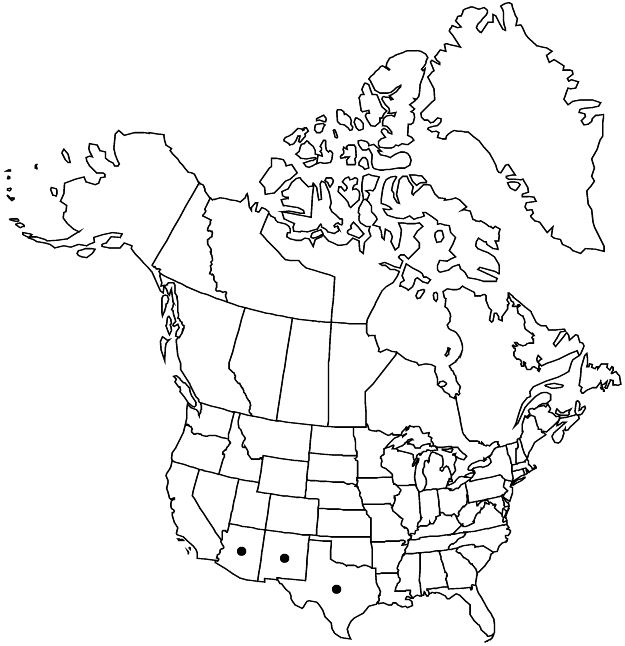Difference between revisions of "Phoradendron villosum subsp. coryae"
Brittonia 16: 45. 1964.
FNA>Volume Importer |
FNA>Volume Importer |
(No difference)
| |
Revision as of 18:22, 24 September 2019
Hairs on young stems, leaf blades, and inflorescences of two types, some in dense clusters, relatively longer, others uniformly distributed, relatively shorter. Staminate inflorescences: internodes each (14–)25(–44)-flowered. Pistillate inflorescences: internodes each (6–)8(–12)-flowered.
Phenology: Flowering Jul–Sep.
Habitat: Oak woodlands.
Elevation: 400–2400 m.
Distribution

Ariz., N.Mex., Tex., Mexico (Chihuahua, Coahuila, Sonora).
Discussion
In the flora area, subsp. coryae is found in Arizona south of the Mogollon Rim, through central New Mexico to the Chisos and Davis mountains of western Texas. Its principal hosts are Quercus species.
The molecular study by V. E. T. M. Ashworth (2000b) showed that Phoradendron villosum is paraphyletic because P. scaberrimum Trelease forms a clade with subsp. coryae. All three of these taxa parasitize Quercus and a shared indel supported their phylogenetic relationship.
Selected References
None.